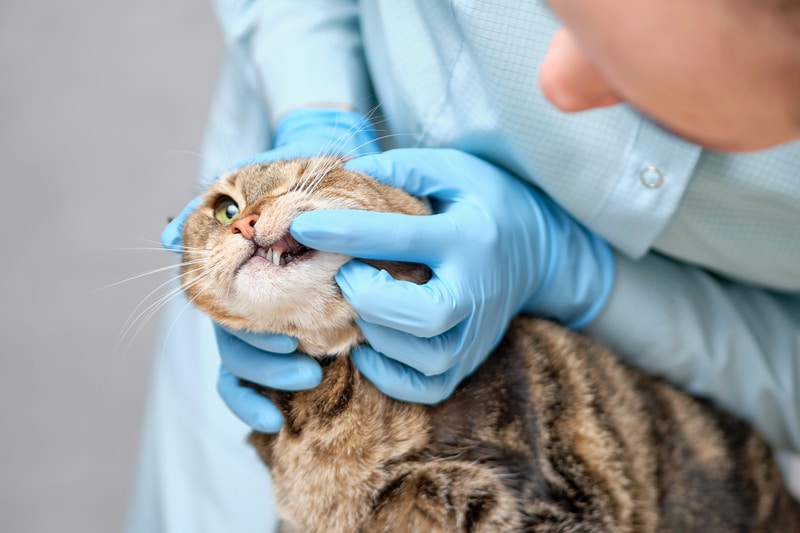

How Do Cats Act When They Have a Bad Tooth?
Since cats can’t speak, you really have to pay attention to their small behavior differences. Here are some signs of cat dental problems that you should keep in mind.
You may be surprised to learn that dental diseases are the most common conditions that cats can face. You need to make sure that your cat has great oral health because it can impact their wellbeing and digestive health. Cats depend on their teeth for basic functions like eating, hunting, and grooming. When cats start to experience dental problems, they can begin to depend on these basic functions, which impacts their everyday life.
Here is a detailed guide on the signs of cat dental problems.
Why Are Cat Dental Issues Hard to Find?
It is difficult to deduce when our beloved pets, particularly felines, are sick. In spite of the fact that felines are commonly considered as a hunter, they are frequently the prey as well. When any animal shows indications of having an illness when they are in the wild, it is viewed as a shortcoming and can be the reason for their downfall.
What’s more, in spite of being next in line as for the most popular pet in the USafter fish, felines actually are not perfect and fully tamed. They have an inborn nature driving them to shroud any weakness. This can make it hard for pet caretakers and owners to gauge whether their cat is ill.
Signs of Cat Dental Problems
Despite the fact that it very well may be hard to observe if your cat is feeling oral pain, felines frequently give pieces of information that dental illness may introduce. The biggest signs for cat dental problems include:
- Excessive drooling
- Vomiting
- Decreased appetite
- Bleeding and swollen gums
- Consistent bad breath
- Unkempt fur coat
Any cat that is feeling pain in the mouth might be hesitant to eat food until it becomes totally ravenous; at that point, they may even vomit out the food. A few felines may essentially look at their food bowls and snarl. They might want to eat, yet it might be hurting them to do the actual action of chewing and biting.
The roughness of a cat’s tongue is due to the papillae, which are essentially barbs. The tongue is an essential organ for cats since they depend on it for both grooming and eating. If the teeth of the cat are hurting, it may prompt the feline to just ingest the food utilizing just the tongue. This would mean that the kibble isn’t properly chewed, which can mean that the kibble fills the stomach way too much. It can result in vomiting right after the meal.
Shockingly, numerous felines actually don’t give any outward indications of oral agony when they experience a dental infection. They will regularly keep on eating since their inner intuition for eating food for survival is strong.
Common Cat Dental Diseases
Dental sickness can show in various forms for cats. Tooth resorption, periodontal disease, malocclusions, oral trauma, stomatitis, and oral tumors are all feline dental issues that can happen if you don’t take proper care.
Periodontal Diseases
Periodontal illness has been reported as quite possibly the most common ailment among cats in terms of oral health. The diseases are known to persist for a long time and progress steadily. The inflammation that occurs around the teeth can be quite painful. It occurs from plaque buildup that has turned into tar.
Malocclusions
Occlusions are characterized by the relationship between the lower and upper jaw’s teeth. The maxilla and mandible jaws need to work in balance to reduce strain on the jaw. If the relationship isn’t properly functioning, a malocclusion can form. It is commonly known as an overbite or abnormal bites in felines. Malocclusions can bring about a strange bite that can result in additional pain.
Tooth Resorption Illnesses
Resorptive sores can happen at whatever stage in life and in pretty much any cat breed. Tooth resorption persists in two main kinds: Type I and Type II. In the Type I kind, the tooth structure is mostly fine, but there can be defects inside the crown of the tooth or the root. For Type I, the only treatment plan that you can get is surgical therapy.
In Type II kind, the tooth’s root is replaced with a bone implant. Treatment plans for Type II frequently include a coronectomy (crown removal).
Stomatitis
Stomatitis is definitely an incredibly difficult oral condition for cats. It occurs when the immune system has an overreaction to the plaque that is gathering on the tooth’s surface. The caudal area of the cavity gets red, and the thickened tissue causes ulcerations. The pain related to this serious inflammation can turn eating into a huge challenge for felines to consume food and really impact the wellbeing of the cat.
Oral Tumors
A common oral tumor found in felines is called squamous cell carcinoma. You should really pay attention to the symptoms that appear because of oral tumors since it can be quite an aggressive malignancy. A quick diagnosis and proper treatment plans are important if you want any favorable results. Sadly, most felines that suffer from squamous cell carcinoma may succumb to the illness.
Our kitty buddies can also get benign oral tumors or swelling from inflammation that can be treated with surgical therapy.
It is important to look out for signs of cat dental problems since it may not always be clear if they are facing any discomfort. Cats have an instinct to hide their illnesses, which is why paying attention to small changes in their behavior is so vital.
Discover how to create a joyful, healthy home for your pet.
Subscribe to your weekly rundown of practice, real life ideas and training tips straight to your inbox.


